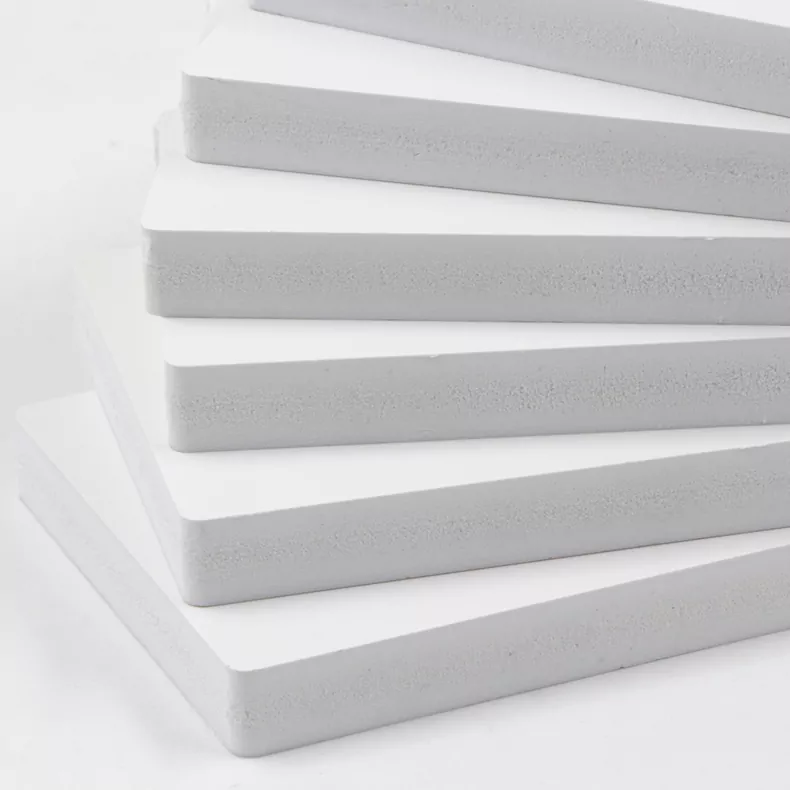Unveiling AC Blowing Agent: The Unsung Hero Behind High-Quality PVC Foam Boards
2025-11-04
 In the ever-changing field of building materials and industrial manufacturing, PVC foam board has become a widely used and essential material, extensively applied in signage, furniture, construction, and even automotive interiors. Its lightweight, weather-resistant, and economical nature makes it a top choice for many projects. Yet, behind every high-performance PVC foam board lies a critical ingredient that shapes its structure, density, and durability—azodicarbonamide, commonly known as AC blowing agent. Today, we delve into the science, functionality, and significance of this unsung hero in PVC foam board production.
In the ever-changing field of building materials and industrial manufacturing, PVC foam board has become a widely used and essential material, extensively applied in signage, furniture, construction, and even automotive interiors. Its lightweight, weather-resistant, and economical nature makes it a top choice for many projects. Yet, behind every high-performance PVC foam board lies a critical ingredient that shapes its structure, density, and durability—azodicarbonamide, commonly known as AC blowing agent. Today, we delve into the science, functionality, and significance of this unsung hero in PVC foam board production.
What Exactly is AC Blowing Agent?
AC blowing agent is a white, odorless crystalline powder classified as a chemical foaming agent (CFA), specifically engineered to release gas during industrial processing. Chemically formulated as C₂H₄N₄O₂, it comprises carbon, hydrogen, nitrogen, and oxygen atoms—elements that work in synergy to create the "foam" structure in PVC foam boards. Unlike physical foaming agents (which rely on compressed gases such as CO₂), AC blowing agent operates through a thermal decomposition reaction, rendering it ideal for the high-temperature extrusion and molding processes involved in PVC foam board manufacturing.
What distinguishes AC blowing agent from other CFAs?
Its ability to produce a consistent, fine cell structure in PVC materials. This is crucial because the size and distribution of foam cells directly influence the board’s strength, insulation performance, and surface smoothness. For manufacturers striving to create PVC foam boards that balance lightness with structural integrity, AC blowing agent is often the preferred choice.
How Does It Work in PVC Foam Board Production?
The functionality of AC blowing agent unfolds throughout the PVC foam board manufacturing process, which typically encompasses mixing, extrusion, and cooling. Here’s a step-by-step breakdown of its role:
1.Mixing Stage: First, PVC resin (the base material) is blended with additives like plasticizers, stabilizers, and colorants. AC blowing agent is incorporated at this stage, usually at a dosage of 1-5% of the total mixture. The exact amount depends on the desired foam density—higher concentrations of AC blowing agent result in a lighter, more porous board, while lower concentrations yield a denser product.
2.Thermal Decomposition: As the mixed PVC compound is fed into an extruder (a machine that heats and shapes the material), temperatures rise to 160-200°C (320-392°F). Within this range, AC blowing agent undergoes a chemical reaction, breaking down into three key gases: nitrogen (N₂), carbon monoxide (CO), and carbon dioxide (CO₂). Nitrogen, which accounts for approximately 65% of the released gas, is particularly vital—it is inert, meaning it does not react with PVC or other additives, ensuring the stability of the foam structure.
3.Foam Formation & Shaping: The gases released by AC blowing agent generate tiny bubbles within the molten PVC compound. As the material passes through the extruder’s die (a tool that imparts the board’s final shape), these bubbles expand and set in place. The outcome is a rigid yet lightweight PVC foam board with a uniform cell structure—free from large gaps or irregularities that could compromise the product’s strength.
4.Cooling & Solidification: After extrusion, the foam board is rapidly cooled (often using water or air). This step preserves the foam structure, as the cooled PVC hardens around the trapped gas bubbles, maintaining the board’s shape and performance properties.
Why AC Blowing Agent Stands Out for PVC Foam Boards?
While other foaming agents (such as sodium bicarbonate or azobisisobutyronitrile) can be used in plastic manufacturing, AC blowing agent offers unique advantages that make it indispensable for PVC foam boards:
Consistent Cell Structure: Unlike some CFAs that produce irregular bubbles, AC blowing agent releases gas uniformly, leading to a smooth, even foam. This is critical for applications like signage or furniture, where surface quality and dimensional stability are paramount.
High Gas Yield: A small quantity of AC blowing agent generates a large volume of gas, making it cost-effective for manufacturers. This efficiency helps keep PVC foam board prices competitive in the market.
Compatibility with PVC: AC blowing agent integrates seamlessly with PVC resin and common additives (such as heat stabilizers). It does not cause discoloration or degradation of the PVC, ensuring the final product retains its color and durability over time.
Controlled Decomposition: The thermal decomposition of AC blowing agent is highly predictable—it only reacts at specific temperatures, allowing manufacturers to fine-tune the foam density and structure with precision. This control is essential for producing PVC foam boards tailored to diverse applications






